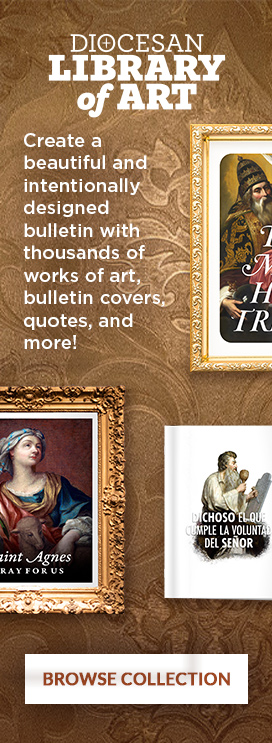How many people when they hear the word faith immediately think of that iconic scene in Indiana Jones where he takes the step out into the apparent void only to be caught by an unseen trail of rock? I know this is where my mind often goes, and though I think this scene actually depicts faith really well, we tend to misunderstand faith as blind obedience to something we can’t understand.
Think about the scene in Indiana Jones for a second. If you haven’t seen the film, Indiana Jones has to make a leap of faith across what looks like a large black hole. His father, who is near death, has full faith that if he takes the step he will survive. Indiana has to put his faith in his father and the knowledge he has in order to get across. Of course, when he jumps, the camera angle turns and reveals a stone pathway that was invisible to the naked eye. Not only was this brilliant from a filmmaking perspective, I think it drives home a point.
Indiana Jones was not trusting dumb luck. He was not jumping out in blind obedience to things he didn’t know. Quite the opposite in fact, he was trusting his father. His father is the one who told him he should jump, his father was the one who fully believed that he would be alright once he took the leap, and then Indiana had to decide. The decision he had to make was whether or not he trusted his father.
It’s really the same with us in the spiritual life isn’t it? If we think of faith as just blind trust to someone we don’t know, then of course we wouldn’t want to have faith. But if we start to learn about who God is, read his story through the scriptures, hear of his love for us, talk with him on a daily basis, then we will start to know him and we can be given the gift of faith.
God wants us to know him and he wants us to trust him. He wants us to know that faith in him gives us power. Like it says in today’s Second Reading, “Faith is the realization of what is hoped for and the evidence of things not seen.” Indiana hoped he wouldn’t fall to his death and trusted his father. His hope was realized, or made true, through the invisible bridge. And once his hope was realized, there was evidence for what he couldn’t see. It is the same with us. When we have faith, our hope becomes realized. Do we believe that? Do we trust God enough that we know he wants what is best for us? Do we have faith in him and how he will care for our needs?
Let’s all pray that we can have faith like Abraham did in the Old Testament. Faith which is the realization of our hope and the evidence of things not seen.
From all of us here at Diocesan, God bless!
¿Cuántas personas cuando escuchan la palabra fe inmediatamente piensan en esa escena icónica de la película Indiana Jones donde da el paso hacia el vacío aparente solo para ser sostenido por un camino de roca invisible? Sé que esto es lo que yo pienso con frecuencia, y aunque creo que esta escena realmente representa la fe muy bien, tendemos a malinterpretar la fe como una obediencia ciega a algo que no entendemos.
Piensa en la escena de Indiana Jones por un segundo. Si no has visto la película, Indiana Jones tiene que dar un salto de fe a través de lo que parece ser un gran vacio. Su padre, que está a punto de morir, tiene plena fe en que si da el paso sobrevivirá. Indiana tiene que poner su fe en su padre y el conocimiento que tiene para poder cruzar. Por supuesto, cuando salta, el ángulo de la cámara gira y revela un camino de piedra que era invisible a simple vista. Esto no solo fue brillante desde una perspectiva cinematográfica, creo que también ilustra el punto.
Indiana Jones no confiaba en la mala suerte. No estaba saltando en obediencia ciega a cosas que no sabía. De hecho, todo lo contrario, confiaba en su padre. Su padre es quien le dijo que debería saltar, su padre fue quien creyó plenamente que estaría bien una vez que diera el salto, y luego Indiana tuvo que decidir. La decisión que tenía que tomar era si confiaba o no en su padre.
Realmente es lo mismo con nosotros en la vida espiritual, ¿no? Si pensamos en la fe como una simple confianza ciega en alguien que no conocemos, entonces, por supuesto, no querríamos tener fe. Pero si comenzamos a aprender acerca de quién es Dios, leemos su historia a través de las Escrituras, escuchamos de su amor por nosotros, hablamos con él a diario, entonces comenzaremos a conocerlo y se nos puede dar el don de la fe.
Dios quiere que lo conozcamos y quiere que confiemos en él. Él quiere que sepamos que la fe en él nos da poder. Como dice la Segunda Lectura de hoy, “La fe es la forma de poseer, ya desde ahora, lo que se espera y de conocer las realidades que no se ven”. Indiana esperaba no murir al caer y confiaba en su padre. Su esperanza se realizó, o se hizo realidad, a través del puente invisible. Y una vez que su esperanza se hizo realidad, hubo evidencia de lo que no podía ver. Es lo mismo con nosotros. Cuando tenemos fe, nuestra esperanza se hace realidad. ¿Creemos eso? ¿Confiamos en Dios lo suficiente como para saber que Él quiere lo mejor para nosotros? ¿Tenemos fe en él y en cómo cuidará de nuestras necesidades?
Oremos todos para que podamos tener fe como la tuvo Abraham en el Antiguo Testamento. Fe que es la forma de poseer, ya desde ahora, lo que se espera y de conocer las realidades que no se ven.
De parte de todos nosotros aquí en Diocesan, ¡Dios los bendiga!

Tommy Shultz is a Business Development Representative for Diocesan. In this role he is committed to bringing the best software to dioceses and parishes while helping them evangelize on the digital continent. Tommy has worked in various diocese and parish roles since his graduation from Franciscan University with a Theology degree. He hopes to use his skills in evangelization, marketing, and communications, to serve the Church and bring the Good News to all. His favorite quote comes from St. John Paul II, who said, “A person is an entity of a sort to which the only proper and adequate way to relate is love.”
Feature Image Credit: Dayne Topkin, unsplash.com/photos/xTmqoidRoKQ
